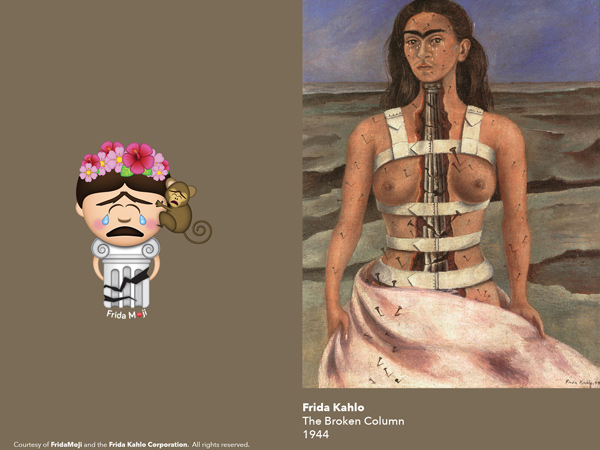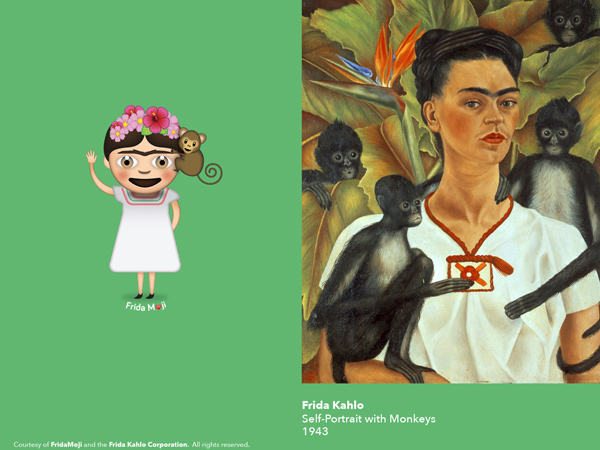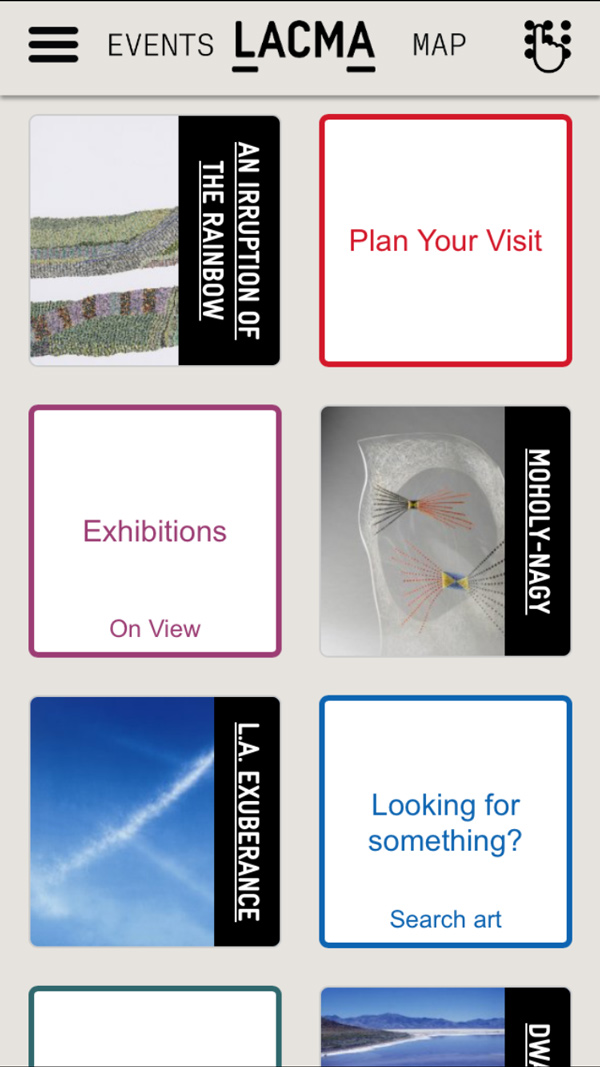It used to be about the art. It used to be that seeing (and being told to step back from) a Picasso was enough. But, once again, millennials have ruined it for everyone. Simply admiring a statue is as anathema as simply watching a movie without simultaneously texting, checking IMDb for where you recognize that actor from, and taking a selfie at the theater #lovegettingoffsocialmediaforabit!
Museum apps are downloadable content that augments your art-observing experience. After giving the following apps a click I also had to download a psychiatry app, What’s Up?, for my bipolar stance on the matter. While I continue to snark the opening paragraph, I celebrate the emancipation of paid audio guides, much as I despise seeing that little headphone icon that reminds me there’s more to the didactic that I’d never get to experience because I’m too cheap to pay $8. So imagine The Thinker holding an iPhone and maybe download…
The High-Tech Placard, Smartify, Magnus
Regardless of your feelings about Millennials, these are apps everyone can embrace—except for the museum guards that tell you “No pictures.” Sometimes the placards, or didactics, beside the art work are too small to read, or they are blocked by an oblivious museumgoer. Or perhaps you just want to know more than the didactic is willing to tell you.
These apps—available for various museums, with material being added daily—can be thought of as Shazam for paintings, but without the worry of the song being over by the time the app boots up. You point your camera at a painting and the app’s image-detection software goes to work; moments later, it delivers you more info than any docent could ever hope to repeat (bonus: you don’t have to endure docents repeatedly asking the audience for their thoughts and being met with silence).
Magnus takes it a step too far: It also shows you the price of the work, from auctions and galleries. (The art establishment shares my sentiments—they sued, and got Magnus banned from the App Store.)
Museum Hack
It sells itself as “Museum Tours… for people who don’t like museums!” Hopefully they’ll soon come out with Bar Hack that brings works of art into clubs. Museum Hack is not an app but an alternative tour of museums in New York, San Francisco, Washington, D.C., and Chicago (offered as public group tours, private family & VIP tours, “fun girl parties,” and “team building company adventures”).
Full disclosure: I’m torn on MH. While “fun girl parties” reminds me of how I felt at the conclusion of Matthew Barney’s River of Fundament, I celebrated MOCA After Dark and LACMA’s Muse ‘Til Midnight as a unique remix of museum space. There is no reason museums need to be as clinical as they so often are. Though Museum Hack at times feels like the tours are given by the class clown or a horny docent on meth, it’s more entertaining than listening to coughing and echoing footfalls.

LACMA’s app
The Los Angeles County Museum of Art’s official app takes advantage of a technology many apps don’t, but should, incorporate: Bluetooth. Enable it, and LACMA’s app senses which piece you’re near and brings up relevant information. It’s a subtle property, but any tool that allows you to spend more time looking at the paintings and less time correcting AutoCorrect deserves unstinting praise.
DailyArt’
I prefer movies to TV series as they’re less of a commitment. This is part of the reason I’m apprehensive to download apps like Google’s Art Project, which provides walk-throughs of some of the world’s top museums. (The other reason is that viewing the Louvre’s 21 x 32-foot Wedding at Cana on a 7-inch screen seems pointless and borderline offensive—look for my App Store review under artsnob56.) But if you can’t make it to the museum every day, you can at least commit a minute or two to art with this app, which begins your morning with a new painting, photograph, sculpture, piece of architecture, etc., and an accompanying short history.
The Broad app
Deserves to be on this list for two reasons. One: museums like the Getty have both apps and audio tours, and I always feel jealous of the audio tourists because I feel like I’m getting a less-than experience. The Broad offers nothing but the app, creating a more egalitarian museum adventure. Like Museum Hack, it also diagnosed and remedied an associated issue: the deficiency of master-narrative audio tours. The Broad app includes four separate tours, including the excellent “Looking with LeVar” family tour, where the actor does for art what he did for books on Reading Rainbow.
Many of these apps are designed to attract the finicky millennial audience into museums; with whatever-the-next-generation-is-called brought up on visual multi-tasking, it’s wise for cultural institutions to target this audience early. It’s how I felt about Harry Potter—sure, there are better books, but I support whatever inspires children to read. We should equally support whatever gets kids, and millennials, and my benighted baby-boomer cousins into museums. If only so I can deride them for needing an app to know how to pronounce Degas. (The s is silent, Randy.)
Fridamoji

What kind of world do we live in where we get an emoji of smiling feces before Frida Kahlo? To rectify this cultural oversight, Museumito teamed up with the Frida Kahlo Corporation to create Fridamoji—160 digital icons (30 free), from and inspired by the artist’s work. Instead of texting your ex-lover the overused smiley-face-with-tear, this app lets you send that heartless bastard a weeping Kahlo with cracked-pillar body, a sobbing monkey clinging to her head.

This Fridamoji directly references the artist’s The Broken Column, and Fridaficionados will recognize, and appreciate, the digitalization of more recondite sources: smiling Kahlo and monkey (from Self-Portrait with Monkeys) giving the suited Kahlo a haircut (Self-Portrait with Cropped Hair); a ribbon-wrapped bomb (off André Breton’s quote “The art of Frida Kahlo is a ribbon about a bomb”); a watermelon slice with the words “Viva la Vida” (lifted from a painting of the same name). Whether apps, emojis or SnapChat filters, anyone trying to sneak art history into the cluttered smartphone market deserves a 5-star review. —JH





